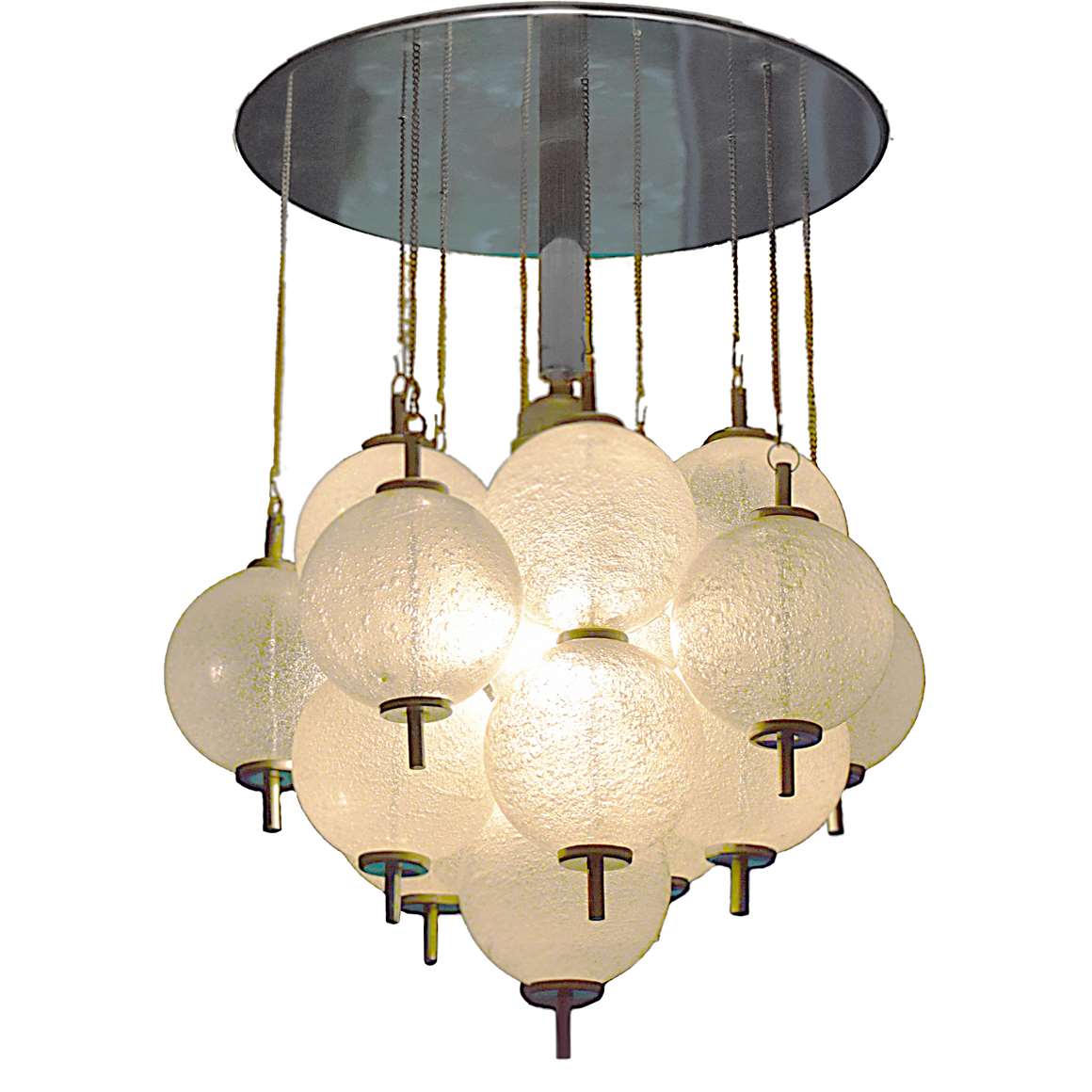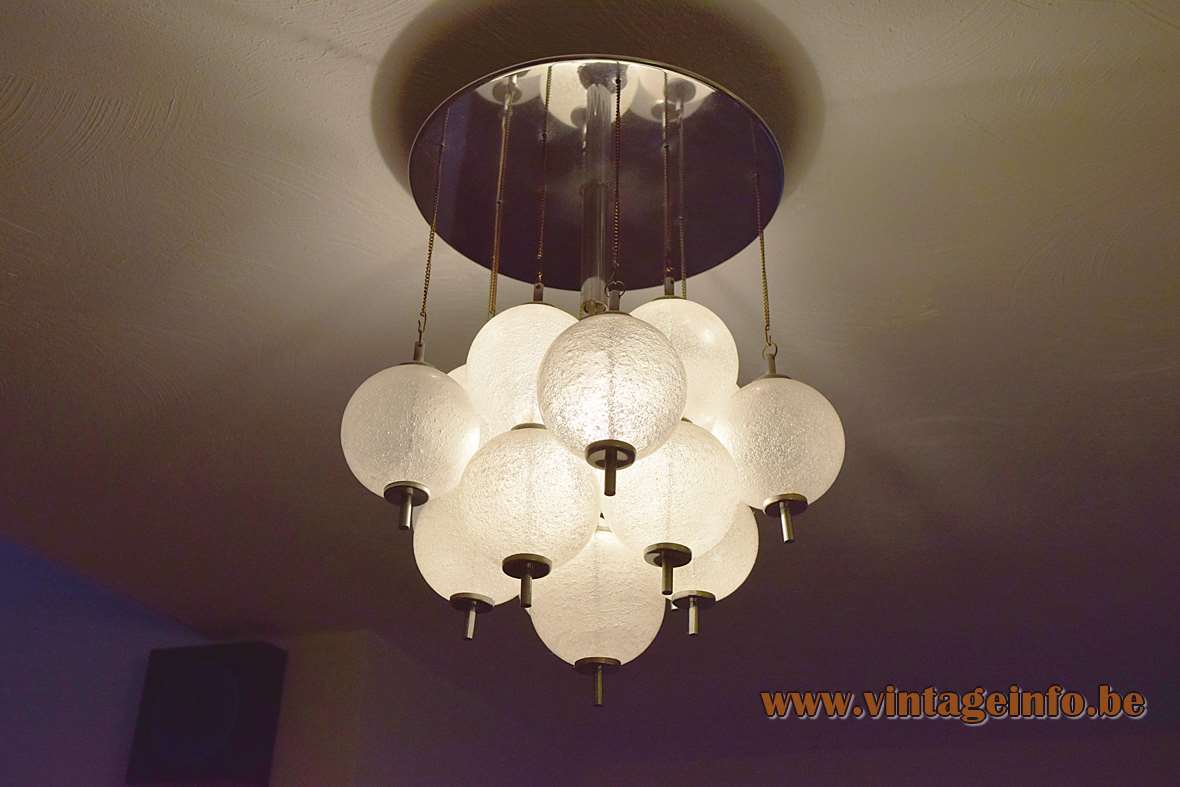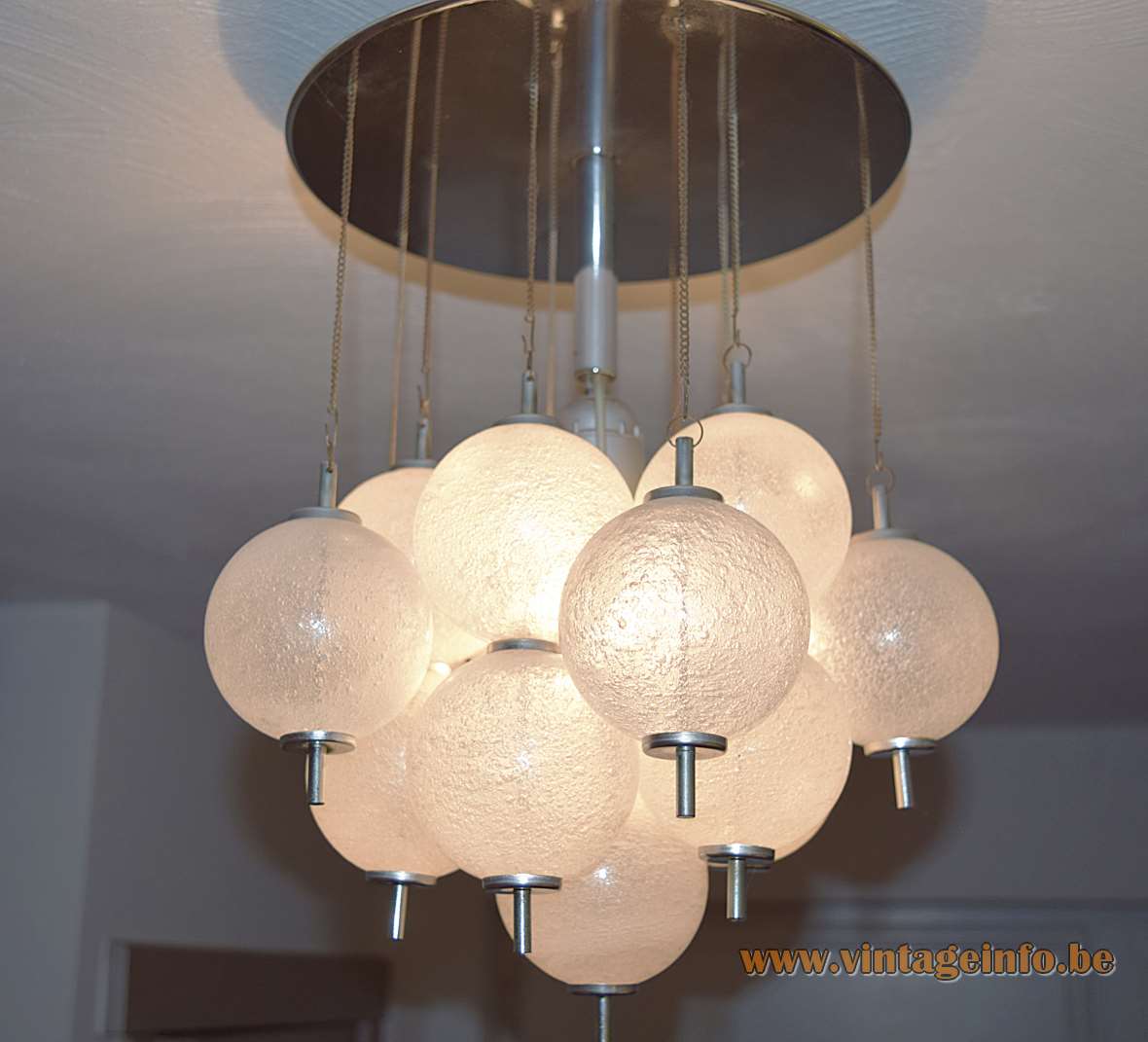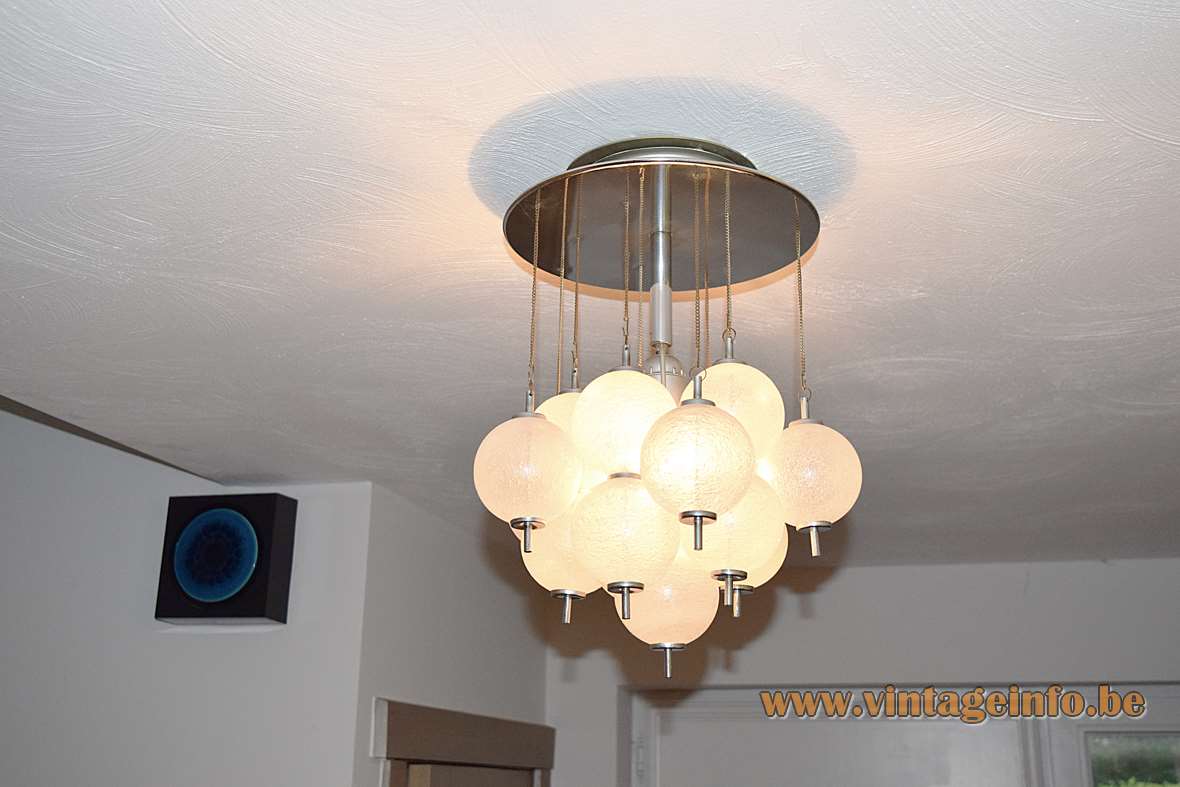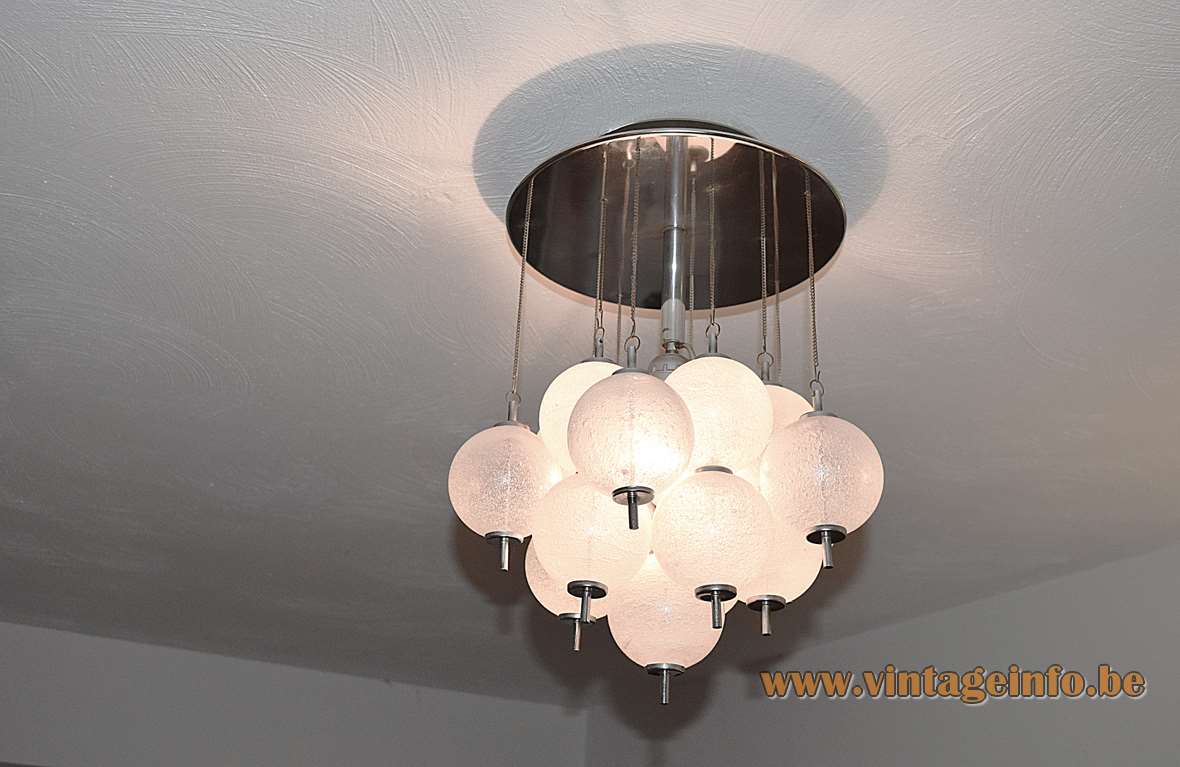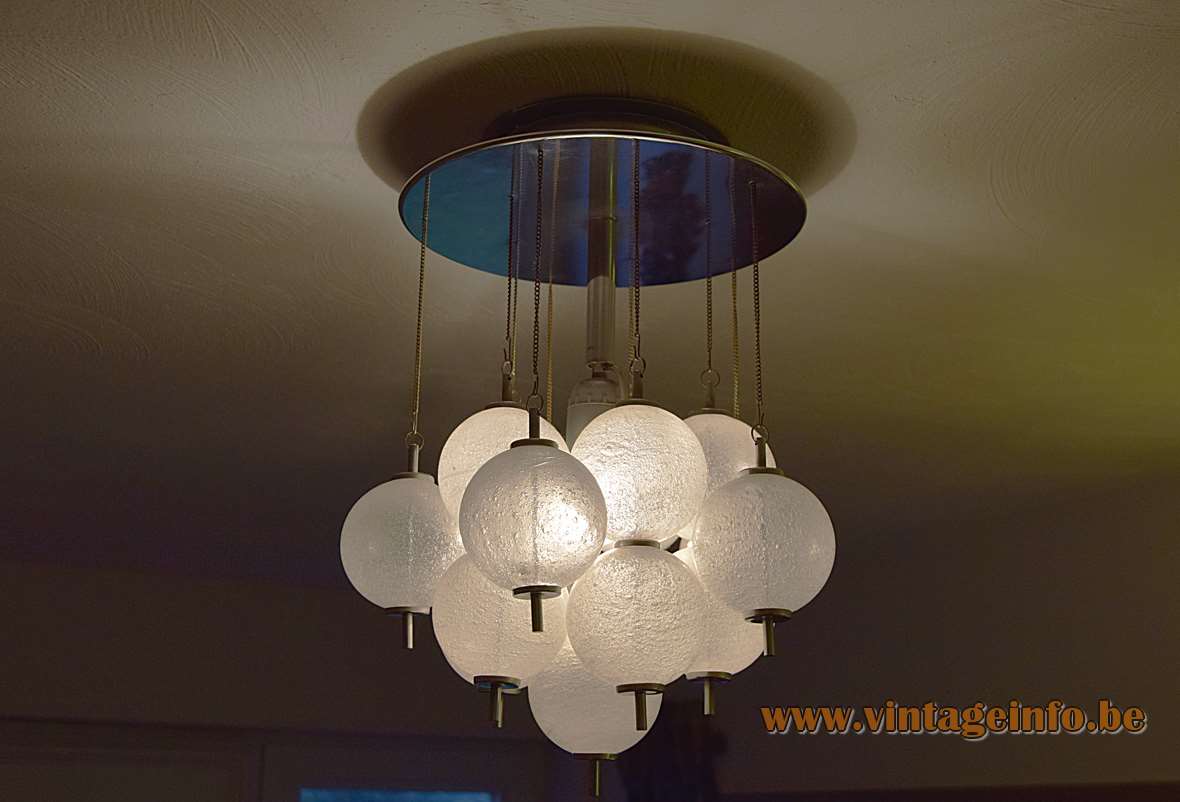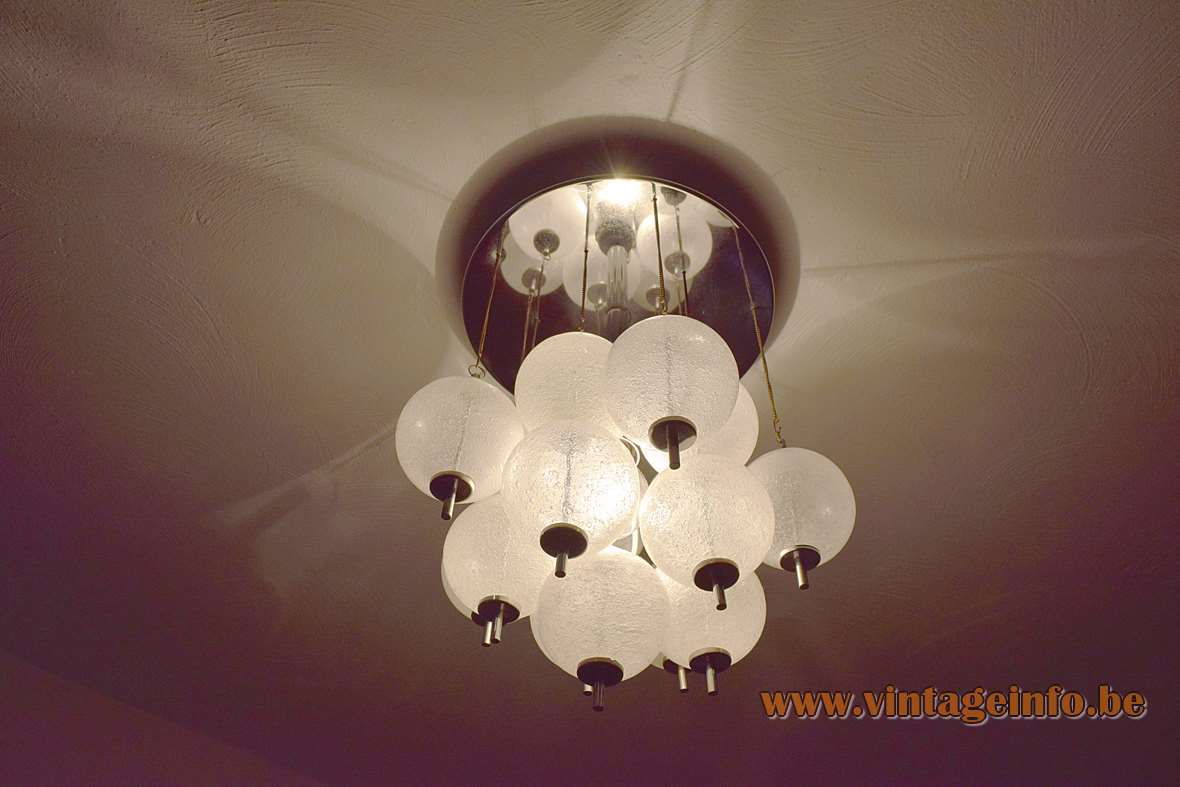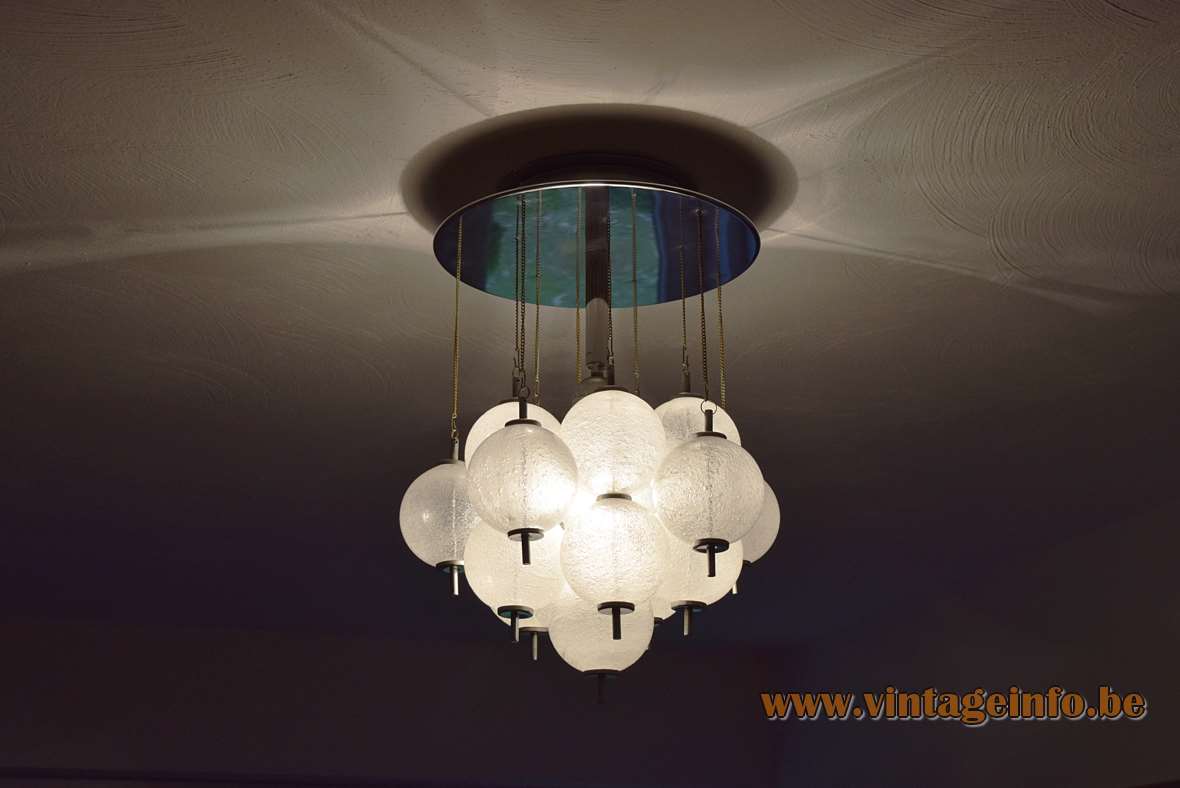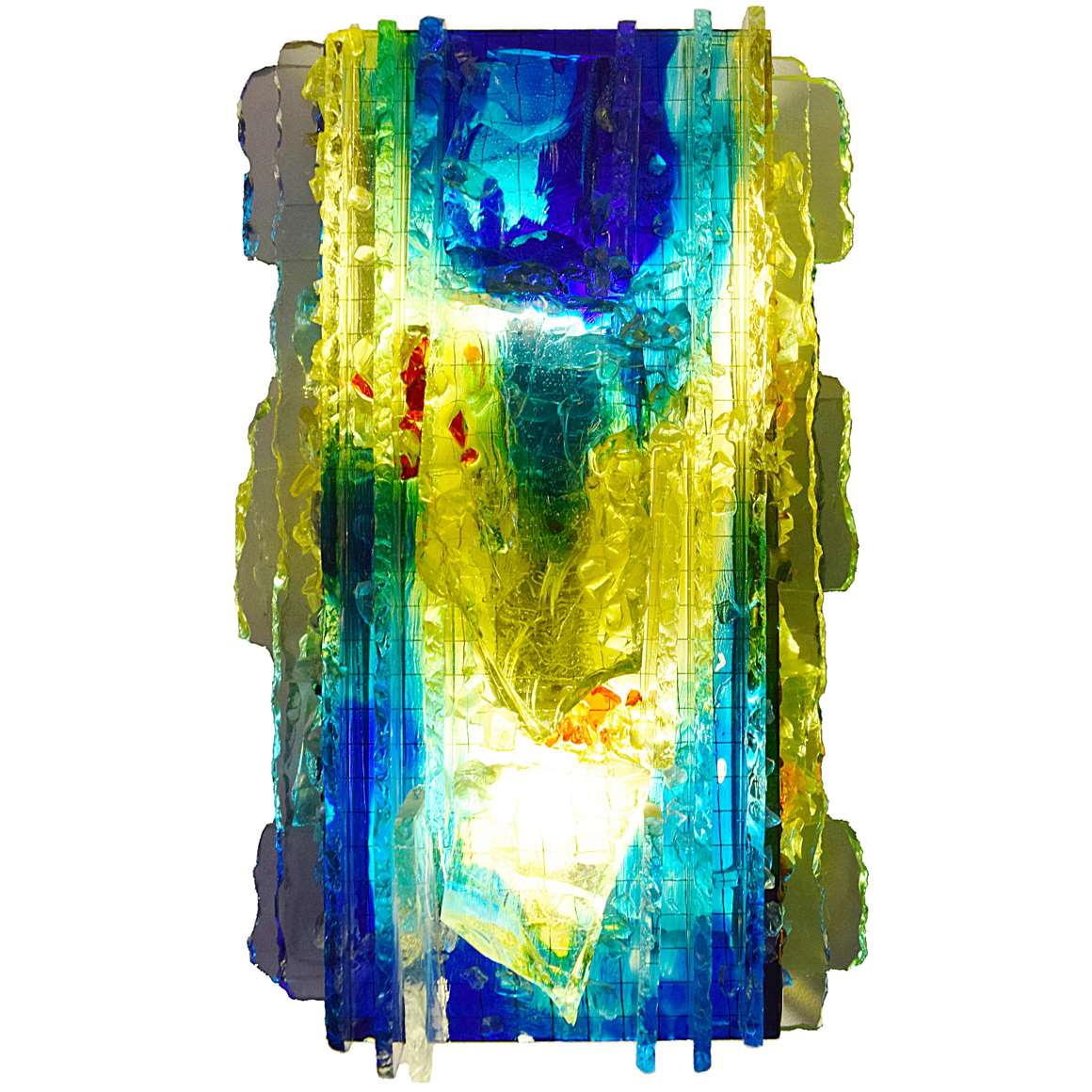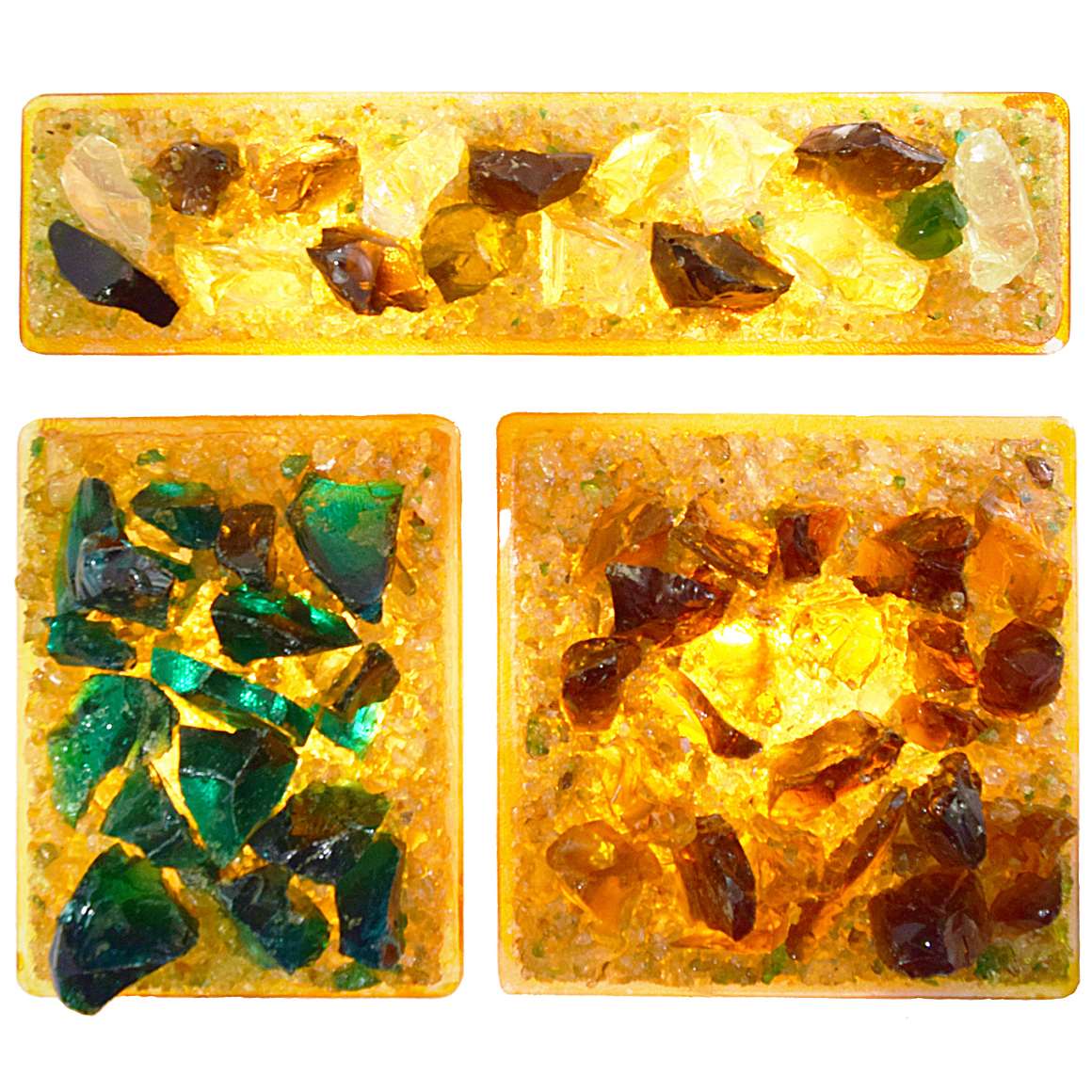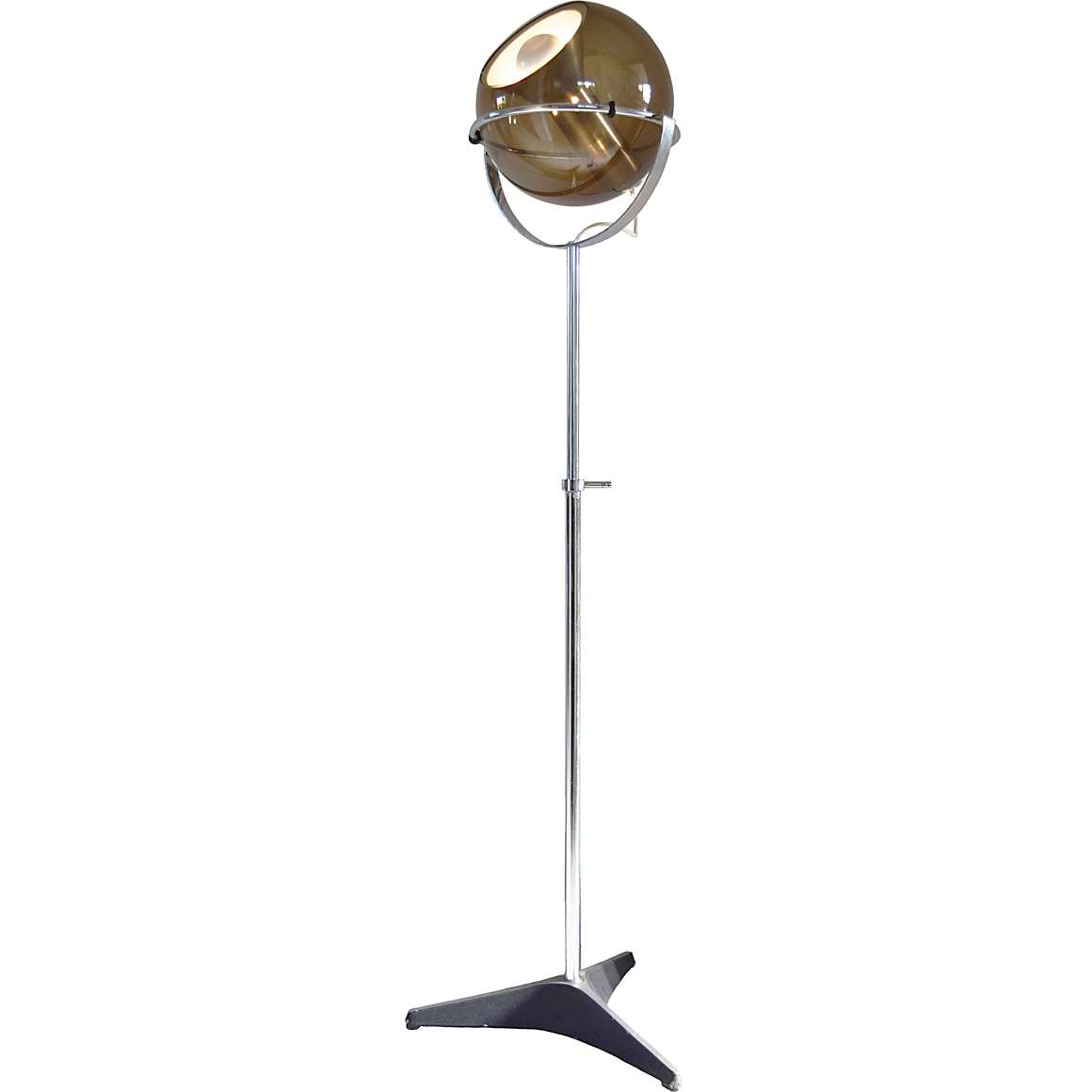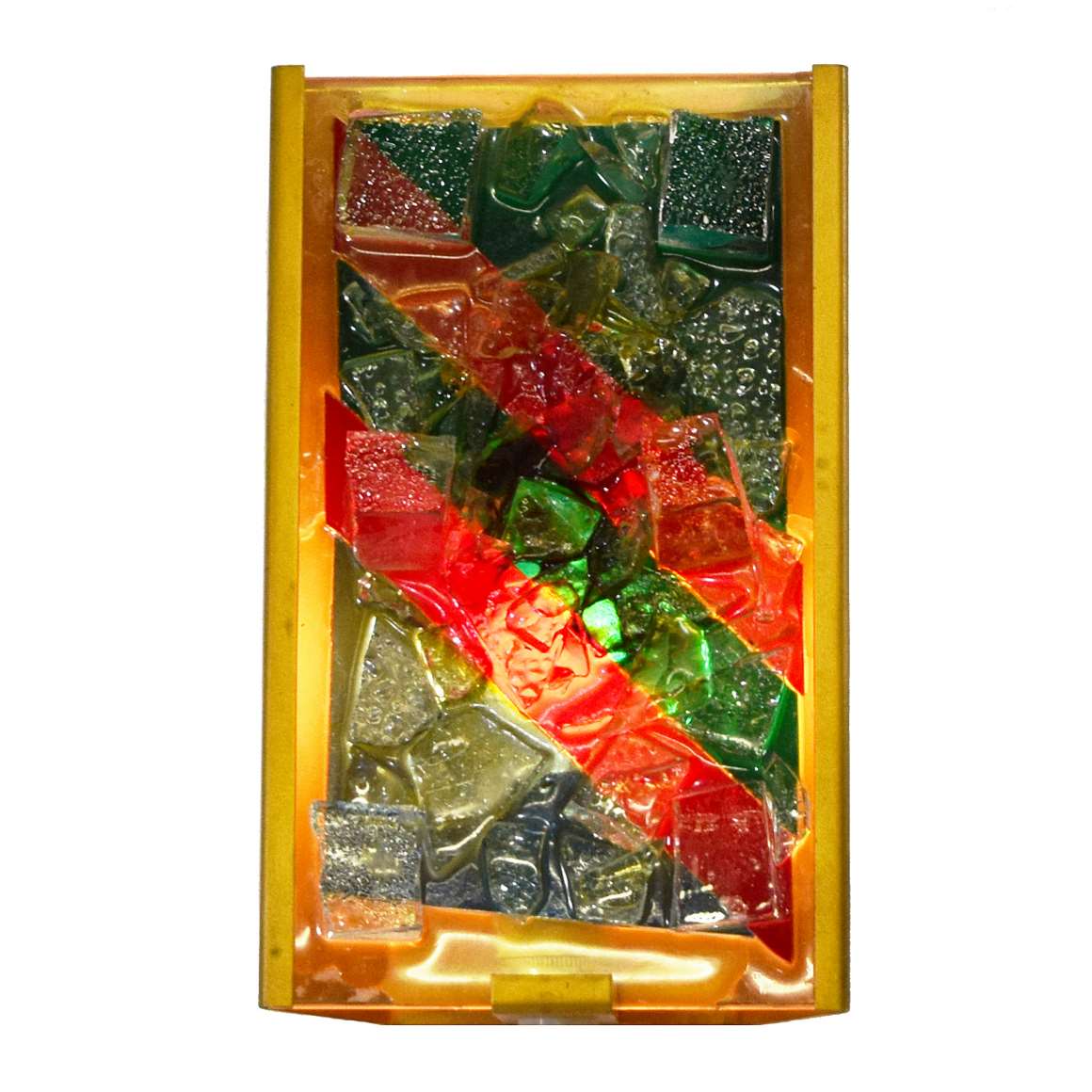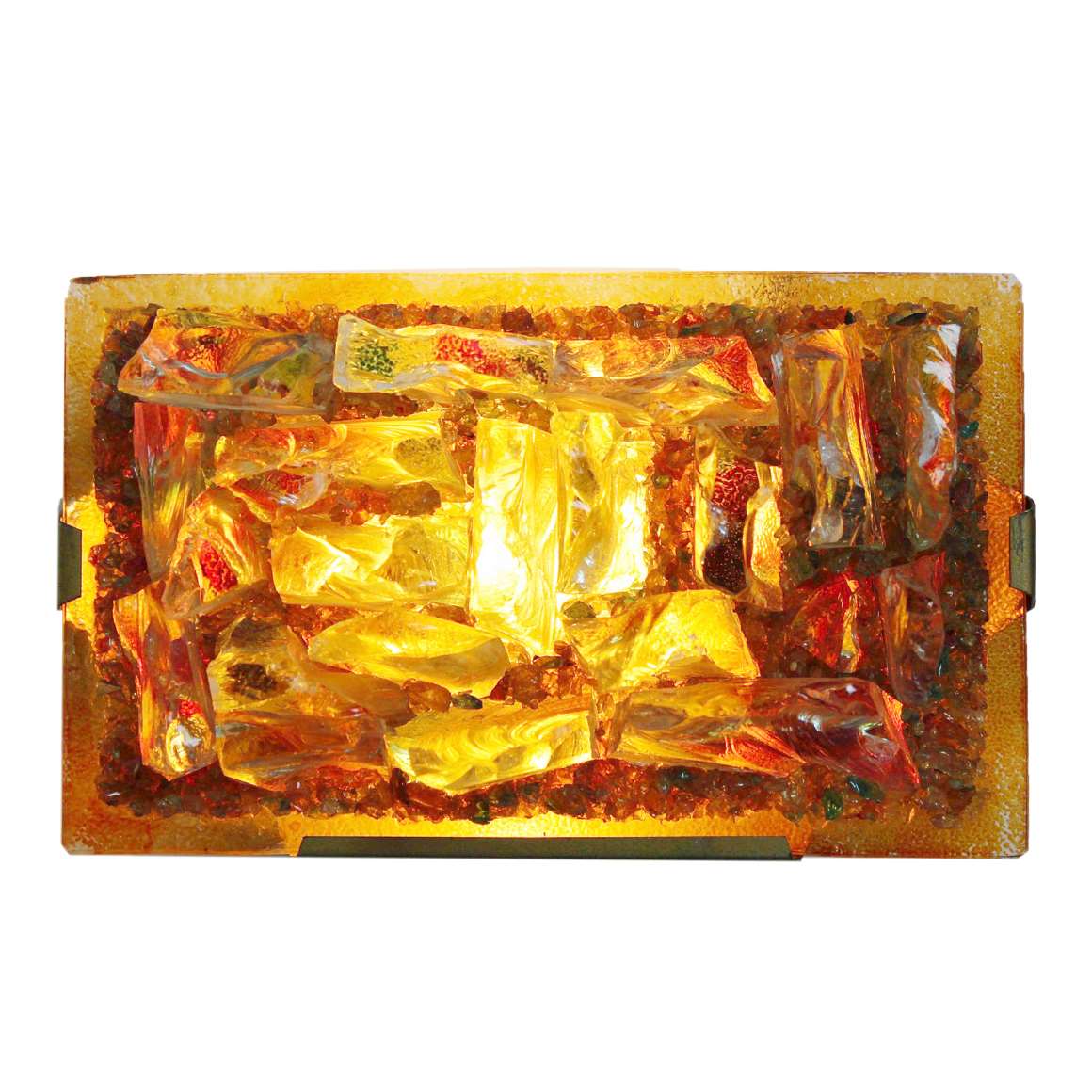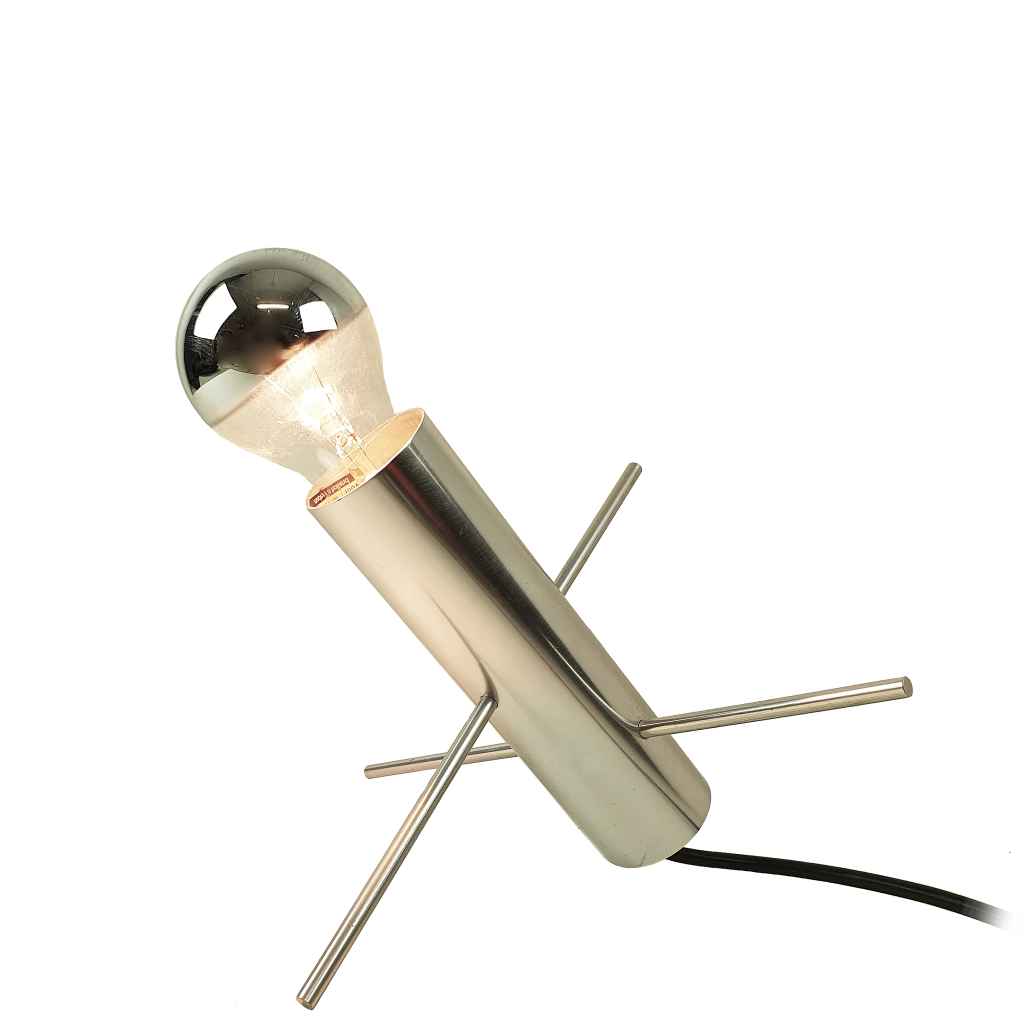Dutch text from the Raak catalogue in 1972
Een stukje van de melkweg
een vallei van sterren
zwevend in het eindeloos niets
B-1029: 44 cm, hoogte 80 cm, gloeilamp tot 100 Watt, bij voorkeur helder.
Compositie van 19 ballons uit vulkanisch natuurglas. waartussen de gloeilamp onzichtbaar is verborgen.
B-1032: dito maar 44 cm. hoogte 90 cm.
Compositie van 25 ballons. Gloeilamp tot 150W, bij voorkeur helder.
B-1033: dito maar 68 mm. hoogte 100 cm. Compositie van 71 ballons. Gloeilamp 200W.
Bij voorkeur helder.
Het Raak licht adviesbureau helpt u graag bij het ontwerpen van speciale composities aangepast aan de schaal van de architectuur.
Translated text from the original 1972 catalogue
A piece of the galaxy
a valley of stars
floating in the endless nothing
B–1029: 44 cm – 17,32 inch, height 80 cm – 31,49 inch, up to 100 Watt E27 light bulb, preferably clear. Composition of 19 balloons from natural volcanic glass in between the bulb is invisible hidden.
B-1032: ditto only 44 cm – 17,32 inch, height 90 cm – 35,43 inch.
Composition of 25 glass balloons. Light bulb up to 150W, preferably bright.
B-1033: ditto only 68 cm – 26,77 inch. Height 100 cm – 39,37 inch. Composition of 71 glass balloons. 200W light bulb, preferably bright.
The Raak light consulting firm assist you in designing special compositions adapted to the architecture of the scale.
FMCL00004
0000001
Raak ‘Sterrenbeeld‘ Ceiling Lamp – (Constellation)
Materials: Round metal chrome ceiling mount and small chrome chains (all iron). 19 crystal hand blown “pulegoso” bubble glass balls, globes. Silver painted Bakelite socket.
Total Height: 80 cm / 31.49”
Height: 60 cm / 23.62”
Width: ∅ 44 cm / 17.32”
Electricity: 1bulbE27, 1 x 100 watt maximum, 110/220 volt.
Any type of light bulb with an E27 screw base can be used, but a clear light bulb is recommended. It gives the best result with this type of lamps.
Period: 1970s – Mid-Century Modern.
Designer: To be appraised.
Manufacturer:Raak, Amsterdam, The Netherlands.
Other versions: The Raak Sterrenbeeld ceiling lamp exists in several different sizes and forms. Also produced as a chandelier.
These Sterrenbeeld lamps only appear in catalogues from the 70s. In catalogue 12 from 1982 only a small photo shows up, without further explanation.
Pulegoso: Italian word taken from the dialect word pulega, which means bubble. The glass is containing numerous bubbles of all sizes, produced by adding bicarbonate/soda, gasoline, or other substances to the glass. The bubbles make the glass semi-opaque and give the surface an irregular texture. The technique was developed in the 1920s by Napoleone Martinuzzi (1892-1977) on the island of Murano, Italy and used for the first time by the famous Venini company.
Raak
The Dutch company Raak was founded in 1954 by Carel O. Lockhorn (18 June 1923 – 6 October 2004), a previous employee of Philips Lighting Eindhoven. Raak, which means “to hit” in Dutch, implies design which precisely “hits the nail on the head”.
Raak is best known for their organic modern design of the 1960s and 1970s which combined glass & metals for a sophisticated futuristic style.
The light company collaborated with several international designers and architects, including Bertrand Balas, Evert Jelle Jelles, Frank Ligtelijn, Ger Vos, Jan Jasper Fayer, Li Helo, Maija-Liisa Komulainen, Nan Platvoet, Nanny Still-Mackinney, Nico Kooi, Sergio Asti, Tapio Wirkala, Willem van Oyen and many others.
Collaborations
Raak also collaborated with other companies. They worked with the German Peill+Putzler for the Raak Globe lamps. Peill+Putzler produced the glass. They also sold lamps made by Peill+Putzler, such as a pendant lamp designed by Aloys Ferdinand Gangkofner. For the Raak Discus the glass was made by Bega, also a German company. For the Stalactites flush mounts a cooperation with the Belgian Val Saint Lambert was undertaken in the late 1950s. Raak also sold some lamps that were produced by Staff Leuchten (Staff & Schwarz Leuchtenwerke GMBH) from Germany, and several other companies.
Carel Lockhorn sold the company in 1974 to ITT but remained a director until 1977. In 1980 Raak merged with BIS Lighting from Aalsmeer, also in The Netherlands and was renamed into BisRaak. In 1986 the Raak company became independent again. The company got a business appearance and only the colours white, black and grey were still processed.
In 1999, Raak merged with Artilite B.V. and Indoor B.V. and became CLA: Centrum voor Lichtarchitectuur B.V. in Drachten (Centre for Light Architecture). Lichtarchitectuur (light architecture) was the Raak tagline from the beginning in the 1950s. The Centre for Lighting Architecture was founded by Egbert Keen. The company was declared bankrupt on 19-05-2011.
Links (external links open in a new window)
Pulegoso explained on Muranet.com
Vintageinfo
Raak Sterrenbeeld in the 1972 catalogue 9
Raak Sterrenbeeld in the 1978 catalogue 11
